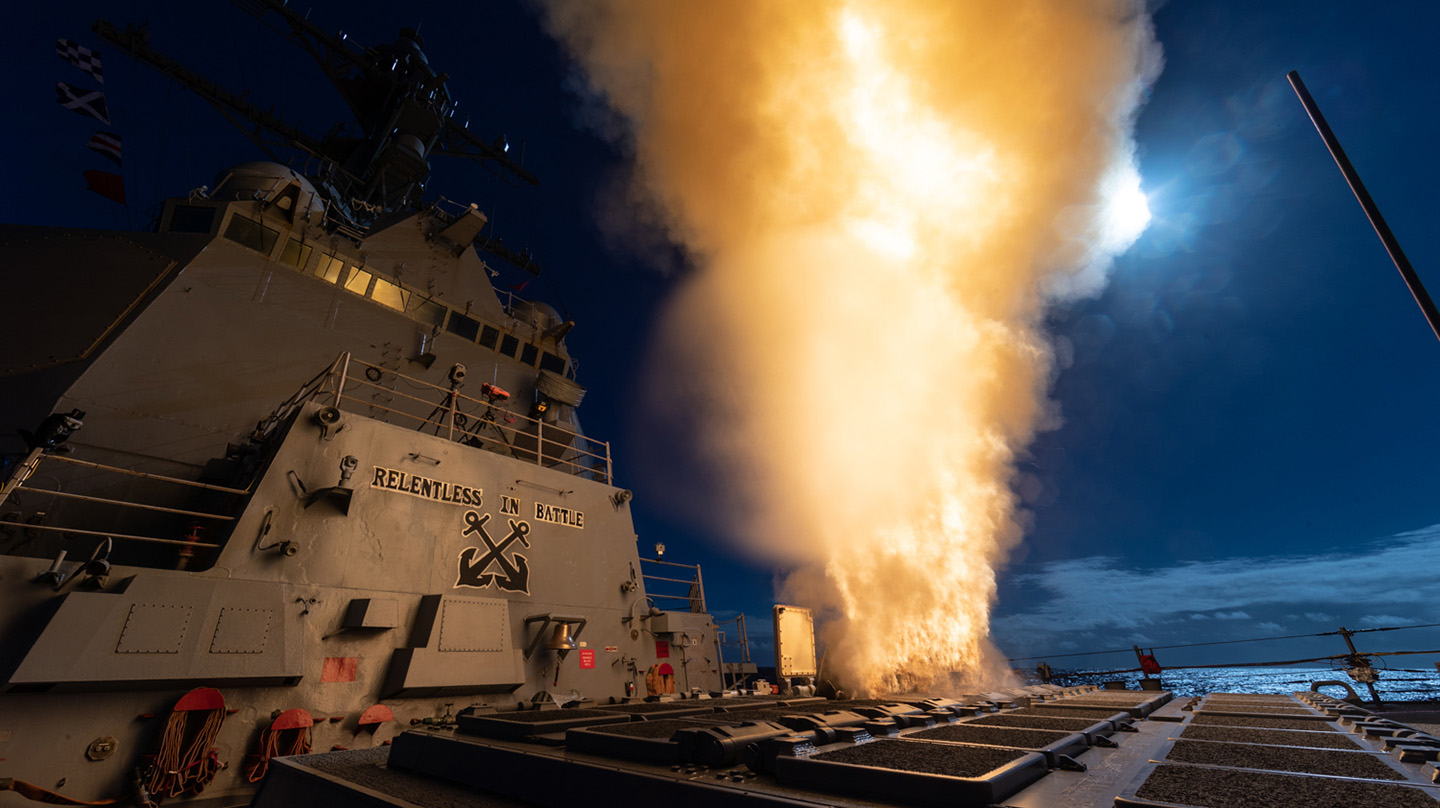News — The Johns Hopkins Applied Physics Laboratory (APL) in Laurel, Maryland — in cooperation with the U.S. Missile Defense Agency (MDA) and the U.S. Navy — played a critical role in the successful execution of Flight Test Other-23 (FTX-23). The Feb. 8 test — also known as Stellar Sisyphus — demonstrated sensor tracking and communications link capabilities of the Aegis Weapon System, a cornerstone of naval missile defense for which APL has served as the technical direction agent for many years.
Used by the U.S. Navy and other allied navies, the Aegis Weapon System is designed to track, engage and destroy enemy missiles and aircraft while providing protection to ships and their accompanying fleets. The system is constantly evolving to address new threats and incorporate advancements in technology, so the MDA and the Navy schedule frequent flight tests to validate new capabilities and assess system performance.
MDA and the Navy executed FTX-23 off the coast of the Pacific Missile Range Facility in Kauai, Hawaii. The first part of the event demonstrated the Aegis Weapon System’s ability to track and discriminate a medium-range ballistic missile (MRBM) target amid countermeasures; the second part involved the firing of a Standard Missile-3 (SM-3) Block IIA, which intercepted the same MRBM target, verifying additional functionality of the SM-3 Block IIA.
The test not only verified the missile’s functionality but also underscored the Aegis Weapon System’s capacity for conducting some of the most challenging target discrimination and intercept missions to date.
A medium-range ballistic missile target with countermeasures is air launched from a C-17 aircraft from southwest of the Pacific Missile Range Facility in Hawaii during FTX-23.
Credit: MDA/U.S. Navy
The USS McCampbell and USS Jack H. Lucas — both Arleigh Burke-class guided missile destroyers — along with the Aegis Ashore Missile Defense Test Complex and the Advanced Radar Development Evaluation Laboratory, participated in the test, collecting valuable tracking data on the target that will be used to anchor modeling and simulation efforts aimed at further improving the U.S. Navy’s missile defense system.
As the technical direction agent for Aegis BMD, APL guides and oversees the technical aspects of the system’s development, testing and integration. Laboratory engineers played essential roles in planning and designing the FTX-23 mission scenario, evaluating the test target and predicting how the Aegis BMD system would perform during the test.
“APL has played a critical role in the development and evolution of ballistic missile defense from the sea for decades,” said , executive of the at APL. “The successful execution of FTX-23 reflects vital progress the integrated government-laboratory-industry team has made in advancing theater air and missile defense to counter the increasing complexity of evolving adversary missile capabilities.”



